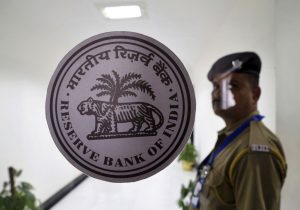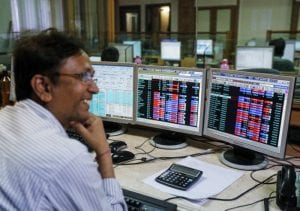Limited impact of slowdown on Indian IT; recession could actually benefit the sector, says Nasscom chairman

KV Prasad Jun 13, 2022, 06:35 AM IST (Published)
 Listen to the Article (6 Minutes)
Listen to the Article (6 Minutes)
Summary
Indian IT is a sector that has withered many slowdown storms to become resilient and capable of steering through the current economic slowdown blues. That seemed to be the consensus of the Indian IT sector at Nasscom’s India Fintech Day. And going by the earnings performance of Indian IT services companies in the April to …
Continue reading “Limited impact of slowdown on Indian IT; recession could actually benefit the sector, says Nasscom chairman”
Indian IT is a sector that has withered many slowdown storms to become resilient and capable of steering through the current economic slowdown blues. That seemed to be the consensus of the Indian IT sector at Nasscom’s India Fintech Day. And going by the earnings performance of Indian IT services companies in the April to June quarter, for now, Indian IT doesn’t seem to be affected. Speaking to CNBC TV18 on the sidelines of the conference, Nasscom Chairman Keshav Murugesh outlined how despite global economic volatility, the deal pipeline and momentum for Indian IT companies was actually positive.
“From a NASSCOM point of view as well as from an individual company point of view, we are not seeing the kind of impact of slowdown. So I will say that even if there is some kind of recession that comes up in the longer-term, actually it could benefit our industry.;” he said. “So if you look at the results, coming out from companies, it continues to be positive. If you look at the guidance coming out from companies, it continues to be positive. If you look at it from the visits that we are seeing from clients – which is a good benchmark – very positive;” he added.
Shifting from its usual tradition, Nasscom stopped giving guidance for the Indian IT services sector in February 2019 citing a shift in the way the industry functions and volatility in the market. For FY19, Indian IT services saw a growth of 9.2 percent, which was a 3 year high for the $162 Bn sector. When asked if FY20 will see a decline or be better, Keshav stuck to not giving out a guidance but seemed to be positive on the outlook, almost alluding to FY20 being as good if not better than FY19. “Very difficult for me to make a call on that for the industry as a whole. I will say that the momentum continues to be positive at this point in time. We will have to wait to see at the year-end what the actual numbers are for the year. However, overall, I would say that the quality of conversations is far superior in terms of quality than we have ever seen before and it is all based on skills, new technologies, digital models and new ways of working with our clients, which augurs positively for the industry. The quality of conversations has moved completely away from discretionary spends to much more what you can do for me. I think that is the kind of conversation that all of us at NASSCOM and NASSCOM companies want to have with our clients.”
That doesn’t go to say that Indian It will not see an impact of clients spending lesser. But the spending patterns have changed. So clients that would spend on traditional IT will now spend on technology that makes them more cost effective, agile and relevant. In addition, IT companies that have not adapted to the changing needs of clients will see a deeper impact of the volatility in the global economic environment. “I will say that while the world is cautious, it does not mean that the IT industry is being cautious. At this point in time, all we are saying is we must cut the coat according to the cloth;” explains Keshav.
However, one common possible pain point that most Indian IT companies have flagged off is the banking and financial services space. Most companies including, TCS, Infosys, HCL tech, Wipro have indicated that BFSI is the one sector they will have to watchout for. That’s the sector that is likely to see the most impact of global slowdown which could mean delays by client’s in projects, budget cuts and US based clients seeing an overall business impact leading to a hit on tech spending.
While the Nasscom Chairman agreed that there were signs of caution raised by some players, there have also been instances of increased spending. “I am seeing both sides of the coin. On one hand you are saying that some companies are having this problem created by their customers, on the other hand I am actually seeing new entrants into the BFSI space go with completely new cloud based models leveraging companies out of India to create the entire technology solution for them while they only own the IP and the customer. The rest is all being delivered by Indian companies. So the models are changing. If you ask me, the traditional old way of doing business is now out of the window. There are completely new ways of doing business and yes, maybe one or two sectors may lag the other sectors but on an overall basis, I would still think that Indian IT continues to do extremely well; “he said
Here is the complete transcript of his interview with CNBC-TV18
Q: There is talk about slowdown blues, it has hit auto sector, it has hit several services sectors, it has hit IT but not as much as we would have thought. Based on the kind of client conversations that you are having, based on the global environment, do you believe that IT spending is going to see a marginal decline in FY20?
A: I think people are talking a lot about this global recession, which you are alluding to as well and we will have to see how that plays out over the next few months. From a Nasscom point of view as well as from an individual company point of view, we are not seeing the kind of impact that you are pointing out at this point in time. So if you look at the results, coming out from companies, continues to be positive. If you look at the guidance coming out from companies, continues to be positive. If you look at the visits that we are seeing from clients – which is a good benchmark – very positive.
Most importantly, CEO Speak on the client side is all focused on digital, transformation, artificial intelligence (AI), ML, all the buzzwords that you want to hear.
Q: Based on the results so far, based on guidance so far, there seems to be an era of caution even though we haven’t seen as much impact on numbers yet. For instance, US-China trade issues, be it Brexit, be it even the kind of job scenario that we are looking at globally, do you foresee second half to be slightly volatile versus the first half?
A: NASSCOM doesn’t give any guidance for the year as such. Having said that, the quality of conversations has moved completely away from discretionary spends to much more what can you do for me. I think that is the kind of conversation that all of us at NASSCOM and NASSCOM companies want to have with our clients. At this point in time, I will say that, based on the kind of conversations we are having, the overall focus has moved to skilling, has moved to talent, has moved much more to disruptive new technologies, has moved much more to analytics based thinking and has moved to much more outcome based thinking, which clients want from their vendours or their partners. So at this point of time, I will say that while the world is cautious, it does not mean that the IT industry is being cautious. At this point in time, all we are saying is we must cut the coat according to the cloth.
Q: In FY19 you had managed to come in at little above 9 percent growth for the full industry, would you be able to roughly maintain that or does it by the initial outlook based, do you believe that that may see some kind of contraction in FY20?
A: Very difficult for me to make a call on that for the industry as a whole. However, I will say that the momentum continues to be positive at this point in time.
Just this morning, I was reading an article in one of the newspapers which spoke about some of the BPM companies and they were growing at double-digits, so the reality is while all this is happening around us, momentum continues to be positive.
We will have to wait to see at the year-end what the actual numbers are for the year. However, overall, I would say that the quality of conversations is far superior in terms of quality than we have ever seen before and it is all based on skills, new technologies, digital models and new ways of working with our clients, which augurs positively for the industry.
Q: What are the points of caution right now in the industry that could hit Indian IT in the near-term for FY20?
A: Traditionally, the whole H1-B issue that we have spoken about has been something that could cause a little bit of dampener but if you see how the Indian IT companies have compensated, they have created assets in the US – I can spend a lot of time talking to you about the benefits of those assets for the US economy and for the US companies as well. That is one area that can delay things.
Companies on the other side, the client side could delay decisions. That is the only thing that they can do. Personally, I would say that what is not in the control of the IT companies in India is something that you shouldn’t be worried about. There is nothing you can do about them.
Q: Banking, financial services and insurance (BFSI) seems to be something that everyone is worried about because the sense that we have gotten from all Indian IT companies, in midcaps, largecaps, I am talking services is that BFSI considering the kind of slowdown woes that are in the global environment. It seems like the US BFSI clients and Europe BFSI clients, which form a massive chunk of Indian IT revenue are at this point in time either delaying spending or cautious or have sort of hit the pause button. Do you foresee that to be a possible pain-point and by when would that change?
A: I am seeing both sides of the coin. On one hand you are saying that some companies are having this problem created by their customers, on the other hand I am actually seeing new entrants into the BFSI space go with completely new cloud based models leveraging companies out of India to create the entire technology solution for them while they only own the IP and the customer. The rest is all being delivered by Indian companies. So the models are changing.
If you ask me, the traditional old way of doing business is now out of the window. There are completely new ways of doing business and yes, maybe one or two sectors may lag the other sectors but on an overall basis, I would still think that Indian IT continues to do extremely well.
Q: What are the sectors that may lag?
A: You just said BFSI appears to be lagging with some of the companies. So maybe that’s one. I, frankly, cannot think of any other.
Q: What about retail manufacturing and hi-tech?
A: I have not seen that because if you look at what western companies are doing at this point in time even with retail and hi-tech, they are all moving to completely new self-fulfillment models. If you look at the kind of investments, companies like Safeway, Albertsons – all these people are making in completely new models where robots are now fulfilling and behind that the IT is all being delivered by great Indian companies from here. So while an old model may give way to a new model; the old way of doing business may get impacted, some employees may get impacted as a result but as long as you are focused on your skilling agenda and you are moving to the new way of doing business, the ability to grow much faster is high and that’s what Indian IT is focused on.
Q: Indian IT most likely to weather slowdown storm if at all there would be one across the board but will FY20 be better or similar to FY19?
A: I cannot give you that guidance at this point in time. NASSCOM has stopped giving guidance. All I will say is that all the factors that go into guidance showcases that the future continues to be bright for the industry.

Elon Musk forms several ‘X Holdings’ companies to fund potential Twitter buyout
3 Mins Read
Thursday’s filing dispelled some doubts, though Musk still has work to do. He and his advisers will spend the coming days vetting potential investors for the equity portion of his offer, according to people familiar with the matter

KV Prasad Journo follow politics, process in Parliament and US Congress. Former Congressional APSA-Fulbright Fellow










 Listen to the Article
Listen to the Article  Daily Newsletter
Daily Newsletter















